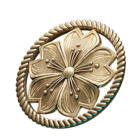Colección Yamamoto Isoroku
La colección al completo está compuesta por cinco subcolecciones. Cada subcolección otorga una recompensa diferente. No hay recompensa adicional por completar todas las subcolecciones al obtener los 40 ítems.
Isoroku Yamamoto, nació como Isoroku Takano, en Nagaoka el 4 de abril de 1884. Fue el sexto hijo de un director de escuela, pero fue adoptado poco después por la familia Yamamoto.
Inició su carrera de las armas en la Academia Naval Japonesa. Una vez graduado como guardiamarina, participó en 1095 en la Guerra Ruso-Japonesa en 1905. Durante la Batalla de Tsushima sirviendo a bordo del buque insignia Mikasa, resultó herido por una granada de artillería que acertó en el acorazado.
En 1919 deja el Japón para ir a estudiar en la Universidad de Harvard, donde estuvo hasta 1921 cuando se graduó y regresó al Japón. Siguiendo su carrera militar, sirvió como Agregado Naval durante los años 1926 y 1927 en la embajada japonesa en Washington, donde se mantuvo hasta el año 1936 al ser nombrado Viceministro de Marina. Justo antes de iniciarse la guerra, en 1941, fue nombrado Comandante en Jefe de la Armada Japonesa. El 18 de abril de 1943 fue honrado con el título de Gensui Kaigun Taishō, Mariscal Almirante de la Flota. Conociendo el poder industrial de los estadounidenses, Yamamoto se oponía a la guerra con Estados Unidos, aunque estuvo obligado a planificar las estrategias navales para vencer al enemigo.
Planificó un primer ataque a Pearl Harbor, con el fin de paralizar a las fuerzas estadounidenses en el océano Pacífico. El ataque sorpresa devastó la base de la flota estadounidense en el Pacífico de Pearl Harbor, aunque no se logró el principal objetivo, que era destruir los portaaviones de la flota americana, pues por causas del destino en esos momentos se hallaban en el mar. Al finalizar la batalla dijo a su Estado Mayor, "Me temo que hemos despertado a un gigante que debe estar lleno de deseo de venganza."
Yamamoto sabía que después del ataque de Doolittle a Japón, era necesario librar una batalla decisiva y preparó los planes para librarla en Midway. Unos 130 buques fueron alistados sin embargo, un poco por suerte, fue derrotado en la que sería el punto de quiebre de la guerra para Japón.
Durante la campaña de las Salomón, su avión, un bombardero Betty, fue emboscado, el 18 de Abril de 1943, por una escuadrilla de cazas bimotores P-38, en Bougainville. Los aviones fueron enviados después de interceptar el tráfico japonés anunciando el vuelo de inspección de Yamamoto. Todos los ocupantes del avión resultaron muertos. La muerte de Yamamoto, de 59 años, fue un golpe moral sin precedentes para Japón. El más brillante estratega japonés, había muerto y al Imperio del Sol Naciente le esperaban las peores horas de su historia.
Collections
"Uniform" Collection
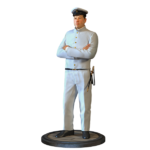
In 1901, at 17 years old, Takano Isoroku, the son of a school teacher from an impoverished samurai family, entered the Academy to take naval officer courses after passing the candidate exam with the second best result among other candidates from all over the country. That was the only way for an ambitious young man to leave the country, poverty, and a lack of prospects behind.
At the Academy on Etajima Island in Hiroshima Bay, a strong Spartan spirit prevailed. Rigorous discipline was best for achieving the leadership potential of the future admiral. His small height didn't prevent him from great achievements in sports and the kendo martial art. His willingness to learn helped Takano Isoroku become one of the Academy's best graduates in November 1904.
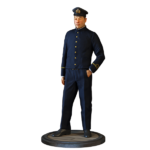
Takano Isoroku graduated from the Naval Academy in Etajima in November 1904, in the midst of the Russo-Japanese War. Before getting his first assignment as an officer, he needed to serve on a warship for some time. The future naval commander was commissioned on the armored cruiser Nisshin, which was included in the main task force of Admiral Togo.
Speaking later about his combat debut during the Battle of Tsushima, Yamamoto said: "A shell hit the only operating 8-inch cannon with terrible force. The smoke cloud cast a pall over the front of the ship, and I felt that I was trapped within the whirlwind. I was thrown for several steps. The range tables disappeared from my neck, and two fingers on my left hand hung loosely by just the skin." The future Commander-in-Chief of the Japanese Navy was lucky: if he had lost three fingers instead of two, he would have been dismissed.
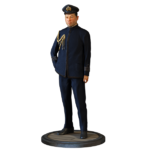
In 1916, Lieutenant Commander Takano Isoroku, a promising young officer, was adopted by the Yamamoto clan and received the surname by which he would become known all over the world. This practice is common in Japan. The rich and influential Yamamoto clan didn't have a male heir, and Takano had several elder Isoroku brothers and little chance of becoming head of the Takano family.
After successfully graduating from the Naval War College, Yamamoto Isoroku was assigned to Second Fleet headquarters in December 1916. Patrolling the waters near Southeast Asia and fighting against raiding German cruisers were the main goals of his division.
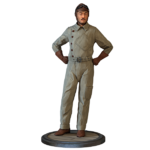
Impressed by the success of aviation he saw during service in the United States between 1919 and 1921, Yamamoto Isoroku realized its potential in naval battles and tried to get assigned to an aircraft division. In September 1924 he was transferred to an air group in Kasumigaura, the first Japanese aviation school established in 1922 with assistance from the United Kingdom. Soon, Yamamoto was assigned as the Senior Officer of the school.
Professional pilots were hostile to the outsider. However, Yamamoto's passion for learning all the secrets of aviation and support of the same inclinations among his subordinates let him gain authority and respect. Some sources state that the future admiral also mastered the art of plane control and took a few flights. Ōnishi Takijirō, the Japanese naval aviation legend, was one of Yamamoto's brothers-in-arms.
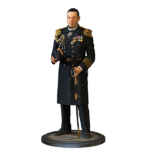
In December 1925, Yamamoto Isoroku was assigned naval attaché in the U.S.A. That was his second post in the country: earlier, in 1919-1921, he was a permanent representative of the Imperial Japanese Navy in the U.S.A.
Yamamoto spent that time mastering the English language, and even studied at Harvard University, where he also explored modern industrial technologies and naval innovations. The most important thing he learned was that aviation could change naval warfare beyond all recognition.
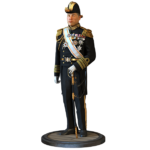
Gaining influence in Japan, military politicians tried to remove from key positions those who could oppose launching an attack on the Pacific Ocean. As a determined opponent of confrontation with the U.S.A. and alliance with the Third Reich, Vice Admiral Yamamoto, who was Deputy Navy Minister in the late 1930s, was constantly receiving letters with threats, which he was easy-going about. He wrote to his friends: "They can hurt my body, but they will never sweep me off my feet."
On 30 August 1939, Yamamoto was assigned Commander-in-Chief of the Combined Fleet, as he was in the good graces of the Emperor and gained the respect of naval officers. That was the last order of his officer-in-charge, Naval Minister Admiral Yonai who was also against the alliance with Nazi Germany and thought that the assignment would save Yamamoto's life, as he would definitely be murdered by nationalists.
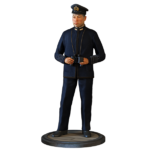
After becoming the Commander-in-Chief of the Combined Fleet, Yamamoto started preparing for war, as he realized that a confrontation with the U.S.A. was inevitable. The "punching fist" of aircraft carriers -- the 1st Air Fleet -- was formed. Warships and task forces practiced various tactics and coordinated actions. Yamamoto appointed his most talented officers to the key positions. Thus, Mitsuo Fuchida became the Commander of the Akagi air group and took personal control over the air attack on Pearl Harbor.
Despite all assumed measures, Yamamoto knew that Japan had little chance of countering the U.S.A. forces. The Admiral answered the question of the Prime Minister about their prospects in the war: "In the first six to twelve months of a war with the United States and Great Britain I will run wild and win victory upon victory. But then, if the war continues after that, I have no expectation of success."
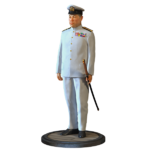
The order to leave Guadalcanal indicated that the Japanese Navy and Army were defeated. Despite this, Yamamoto did his best to save the Army troops from the military post on the island. The evacuation in February 1943 was brilliantly planned and performed, and was Yamamoto's swan song. Three "Tokyo Expresses" transported more than 10 thousand soldiers under the noses of unsuspecting U.S.A troops, they didn't even notice that the Japanese troops had left Guadalcanal until it was too late.
On 3 April 1943, a day before his birthday, Yamamoto flew to Rabaul to take command of Operation I-Go, a massive aerial counter-offensive on the key points occupied by the U.S.A. On April 17, Yamamoto gave his last speech, boosting morale of the pilots before his fatal flight to Bougainville. The next day, the aircraft with the Commander-in-Chief of the Combined Fleet was shot down by U.S.A. fighters.
"Uniform" Collection — Reward
Completing this sub-collection provides the following rewards:
| Icon | Type | Effect |
|---|---|---|
 |
Type 1 Type 2 Type 5 Type 6 |
|
"Uniform Items" Collection
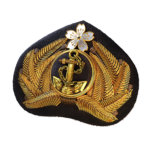
A round cap badge with an anchor framed by fronds of cheery tree as an insignia of chief Japanese Navy officers was introduced in 1870. One of its elements was a cherry blossom, an essential attribute of the Japanese Navy rank insignia. Its final form was introduced in 1883 when all officers had to wear the same model of caps.<br
Yamamoto Isoroku had such a cap badge for over 37 years, from the moment of his first assignment as an officer in August 1905 till his death as Admiral in April 1943.
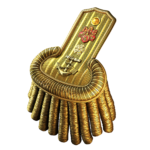
In the mid-19th century, epaulets were used only as an element of officer and official dress uniform. In 1873, they were introduced in Japan after the Meiji Restoration, when many spheres were influenced by Europe. The epaulets of the British Royal Navy officers were used as their template.
As distinguishing features, besides the traditional anchor, images of cherry blossom and paulownia leaves were chosen. They were necessary to wear on dress uniforms after promotion to the first officer rank, including Marshal Admiral. In the late 1930s, epaulets were abolished.
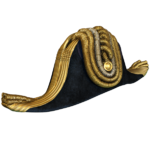
A bicone cap was a traditional element of dress uniform of navy officers in many countries till the middle of the 20th century. It was introduced as a dress cap in the Japanese Navy in 1873 and existed till the end of the 1930s.
An Admiral's dress cap has a golden chevron on the edge and a richly decorated badge.
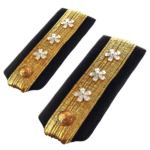
Officer shoulder insignias were introduced in the Imperial Japanese Navy in 1900. They had not become widespread, as the Navy officers used them only on the white summer uniform and service warm.
The shoulder insignia of Admiral ranks had a longitudinal wide golden chevron with silver cherry blossoms on it, the number of which depended on the rank. Full Admirals and Marshal Admirals had three cherry blossoms on their shoulder insignia. Yamamoto Isoroku was promoted to Admiral on 15 November 1940, and to Marshal Admiral in April 1943 postmortem.
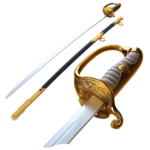
European-style sabers of officers and equal ranks in the Imperial Japanese Navy were introduced in 1871 and replaced samurai swords. Several models that differed slightly were included in the inventory: of 1873, 1883, 1896 and 1914. Images of cherry blossoms that decorated the metal parts of the hilt and sheath were a notable feature of the sabers.
The saber was a symbol of authority and indispensable attribute of Imperial Japanese Navy command personnel, except service uniform that was supplemented with a dirk. In 1937, in the wake of nationalist sentiments, sabers were replaced with traditional Japanese swords again.
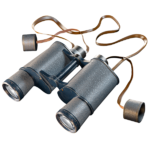
Officers of the Imperial Japanese Navy started using binoculars from the late 19th century. Prismatic form, massive size, multiple zoom levels, and water and harsh climate resistance were among the special features of sea binoculars. 7x50 mm binoculars with 7x zoom and 50mm lenses were very popular as a part of an officer's personal equipment.
Production of optical instruments for the Imperial Japanese Navy started in the 1910s, and was increasing till the beginning of World War II. The high quality of Japanese optics, proven during the Pacific War, gained global recognition.
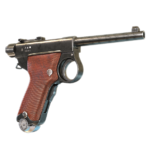
A self-loading pistol designed in 1902 by the famous Kijiro Nambu, sometimes called the "John Browning of Japan". The pistol was manufactured in Japan in various models until 1945 and was widely used by officers in the Army and Navy alike. Caliber: 8mm; magazine: 8 rounds; effective firing range: 50m.
The original Nambu was the Type A; its upgraded version, Type A Modified, was designed in 1906 and was in production until 1923. In 1909, the Nambu Type A Modified pistol was officially adopted by the Imperial Japanese Navy. In the Navy, this model was known as the "Army Type" while in the Army, which never actually adopted it, the model made a name for itself as the "Navy Type." Though the pistol was officially adopted, officers had to buy them with their own money.
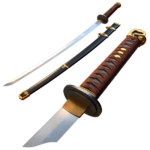
In 1937, sabers of the European type, adopted by the unified Japanese naval forces during the early days of their formation as elements of outfit for command personnel, were replaced by traditional Japanese swords. By its construction, the naval military sword, or kai-gunto, largely mirrored a Medieval Tati-type Samurai sword. The characteristic features of the kai-gunto, which distinguished it from the shin gunto used by the Imperial Japanese Army, were a brown-braided handle and a wooden scabbard with black-finish.
Yamamoto Isoroku owned several swords made by swordsmiths in accordance with traditional Japanese blacksmithing techniques. The Admiral had one of these swords with him at the time of his death.
"Uniform Items" Collection — Reward
Completing this sub-collection provides the following rewards:
| Icon | Type | Effect |
|---|---|---|
 |
Type 1 Type 2 Type 5 Type 6 |
|
"Rewards" Collection
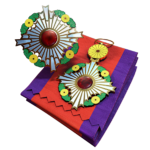
The Supreme Order of the Chrysanthemum, the oldest of the Japanese orders, was established in 1876 by Emperor Mutsuhito. The badge and star of the Order depict a red enameled sun disc casting white rays. Between the rays is the yellow enameled chrysanthemum blossom with green leaves.
Admiral Yamamoto Isoroku was awarded the Order posthumously, in April 1943. Throughout the history of the Order, aside from Yamamoto, the Imperial Family, and heads of states, only 50 people were honored with this highest award.
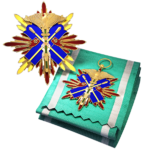
Instituted in 1890 by Emperor Mutsuhito, the Order of the Golden Kite was conferred exclusively for distinguished military service. A legend says that a golden kite was sent to Emperor Jimmu by gods to help him in defeating his enemies in the final battle for a united Japan. Apart from the kite, the Order features crossed swords and two Samurai war shields. 1st Class of the Order: a badge suspended on a white ribbon in green with a white stripe near the edges, worn on a sash, with a Breast Star worn on the left chest.
Yamamoto Isoroku was awarded the highest Class of the Order after his death in April 1943. By the time the Order was abolished in 1947, only 14 admirals of the Japanese Navy were awarded the 1st Class, with some of them, like Yamamoto, posthumously.
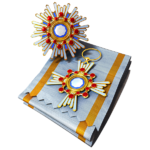
The order of the Sacred Treasure was established by an Imperial Edict in 1888 to be awarded for meritorious civil or military service to Japan. As a rule, the Order was awarded as appreciation for long and loyal service during a certain number of years. The badge and star of the highest classes of the Order were made of gilded silver and contained the depiction of two imperial treasures -- a mirror and precious stones.
Vice Admiral Yamamoto Isoroku was awarded the Grand Cordon of the Order of the Sacred Treasure (1st class) in March 1939 during his service as Deputy Navy Minister.
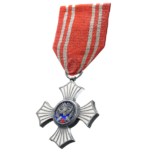
The Japanese Red Cross Society was established in 1887 as the affiliate of the International Red Cross. The Red Cross Silver Medal of Merit was introduced a year later. The cross-shaped medal was made of silver covered with white enamel. The emblem of the Society with an image of the hō-ō fairy-tale bird sits in the centre of the cross.
The Japanese Red Cross Society was very popular due to the support of the imperial family. Admiral Yamamoto Isoroku was an active member. He was awarded the Red Cross Silver Medal of Merit and Honorary Member Medal.
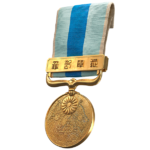
In Japan, the Russo-Japanese War of 1904-1905 was officially called “Meiji 37-38 Campaign” in accordance with the chronology of the era of the then-ruling Emperor. The medal was established on March 31, 1906 by an Imperial Edict in recognition of those who served in the war that ended with the country emerging as a world power. It was made of gilded bronze and depicted the crossed flags of the Japanese Army and Navy with crest symbols on the obverse side. The medal used to be worn on a silk ribbon with a bar stating “Military Medal of Honor.” The blue stripe on the ribbon symbolizes Japan’s victories during the war at sea.
During the Russo-Japanese War, Yamamoto Isoroku, who at that time was known by the name Takano, served on the armored cruiser Nisshin. During the Battle of Tsushima, he was seriously wounded. The would-be naval commander spent several weeks in hospital. Some of the explosion fragments remained in his body for life. However, Isoroku’s merits didn’t go unnoticed: Admiral Tōgō himself promoted him to his first officer rank.
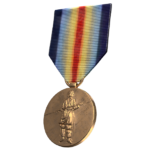
After the end of World War I, French Marshal Foch, the former Allied Commander-in-Chief, suggested at the Paris Peace Conference that all allies establish a medal to be awarded to those that fought in the war. The medal was to be made of bronze and worn on a rainbow suspension ribbon. It was proposed that the obverse side of the medal depict the figure of a winged Victory. In Japan, the medal was established by an Imperial edict on 17 September 1920. But the allegorical winged figure that didn’t mean much for that Japanese was replaced with the depiction of the traditional divinity symbolizing courage.
During the war, Takano Isoroku first served as Adjutant at Yokosuka Naval Base HQ. Later, after graduating from the Naval War College, he was assigned to 2nd Fleet HQ.
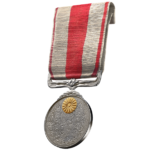
Emperor Yoshito ascended to the throne upon the death of his father in 1912. His motto and throne name throughout his entire region was Taishō, “The Great Justice.” The enthronement ceremonies were held only in 1915. During preparations for his accession to the throne, an Edict was issued, establishing a commemorative medal for the participants of the ceremony. The medal was made of silver. It’s obverse side depicted the heraldic sign, crossed branches of a mandarin tree and cherry blossom, as well as a cloth with congratulatory inscriptions.
As the new Emperor acceded to the throne, Takano Isoroku, who at that time was studying at the Naval War College, received a commemorative medal, and a promotion to lieutenant commander.
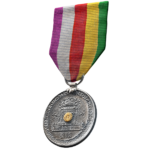
Emperor Hirohito ascended to the throne in December 1926. His motto and throne name throughout his reign was Shōwa, “Enlightened Harmony.” Ironically, it was during his reign that Japan was dragged into the bloodiest war in its history. The enthronement ceremonies were held in November 1928 in Kyoto—the former capital of Japan. As tradition demanded, a medal was established for the participants of the celebrations. It was made of silver with its obverse side depicting the imperial throne surrounded by clouds – a symbol of luck – and encircled by blossoms of cherry and mandarin trees.
In November 1928, shortly after returning from the U.S.A. where he’d served as a naval attaché for several years, Yamamoto Isoroku, at the rank of Captain, was put in command of the light cruiser Isuzu. Over time, the talented naval commander won the favor and support of the Emperor who appreciated Yamamoto’s professional competence and strong commitment to his cause.
"Rewards" Collection — Reward
Completing this sub-collection provides the following rewards:
| Icon | Type | Effect |
|---|---|---|
 |
Type 1 Type 2 Type 5 Type 6 |
|
"Ships" Collection
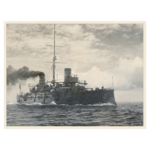
Built in Italy, Nisshin was one of the renowned Garibaldi-class armored cruisers, which served in four navies around the world. Laid down by the order of Argentine, this cruiser was put on sale shortly before the conflict in the Far East and offered to Russia, but after the Russian government declined to purchase it, Japan stepped in and quickly bought the Nisshin-to-be cruiser. Capable of running at a speed of 20 knots, the ship was protected with a 152mm armor belt, and carried four 203mm main guns and fourteen 152mm guns.
In a rush, the still-incomplete cruiser together with her sistership was transferred to Japan, where they arrived in February of 1904, during the very first days of the Russo-Japanese War. Two months later, Nisshin participated in combat actions. In January of 1905, Takano Isoroku, a young Naval Academy graduate, was assigned to Nisshin to serve as an artillery officer. Later in May that year, the Battle of Tsushima became the first real challenge for the future naval commander.
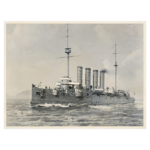
Formerly the Russian cruiser Varyag, scuttled by the crew during the battle against the Japanese squadron under command of Admiral Uryū in February 1904, this cruiser was refloated by the Japanese and renamed Soya. Following a long overhaul and upgrade, the ship was commissioned by the Japanese Navy in 1907. The ship's displacement was 6,500 tons, the upgraded propulsion let the ship run at a speed of 22.7 knots. The cruiser carried 12 Russian 152mm guns and English 76mm guns.
Soya belonged to a training squadron aimed at practical training of the future naval officers of the Imperial Navy. Lieutenant Takano served as a training officer on several ships of that squadron from June 1908 until July 1910, first on cruiser Aso (formerly Russian Bayan), then on cruiser Soya starting from July 1909. During this period, he happened to participate in the large-scale fleet maneuvers and two long-term foreign voyages when he visited ports in North America, Australia, and Southeast Asia.
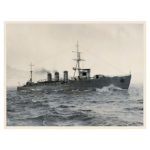
Japan developed the Kuma-class light cruisers at the end of World War I to counter the Omaha-class cruisers built by the U.S.A. Kitikami was the fourth ship in the series. When commissioned, the ship had a displacement of 5,500 tons, and a speed of more than 35 knots. The ship’s primary armament consisted of seven 140 mm guns and four 533 twin torpedo tubes.
Upon returning the U.S.A. where he was a military attaché, in August 1921, Commander Yamamoto was assigned to the recently commissioned light cruiser Kitikami as a senior officer. This talented officer’s career quickly progressed, not allowing him to stay in the same position for a long time. And thus in December 2912, just four months later, Yamamoto was appointed an instructor at the Naval War College that he had graduated from a couple of years before.
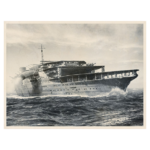
Initially laid down as a battle cruiser, this ship was completed as an aircraft carrier in order to meet the requirements of the Washington Naval Treaty, which imposed strict limitations on the number of new battleships. The aircraft carrier was commissioned in 1927. Prior to the 1935 upgrade, the ship’s displacement was 27,000 tons, the speed was 31 knots, and the armor thickness was 152 mm. The air group consisted of 60 aircraft. In her first years of service, the ship's artillery then included ten 200 mm guns.
After a short period commanding the light cruiser Isuzu, in December 1928, Yamamoto Isoroku was assigned to the aircraft carrier Akagi as her commander. At that moment Akagi was the largest ship of her type. Advocating strict discipline, Yamamoto managed to win the respect and affection of the whole crew.
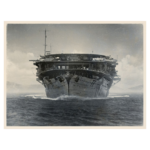
The great Kantō earthquake caused the destruction of the battle cruiser Amagi that was supposed to be completed as an aircraft carrier. Instead, a decision was remade to refit the unfinished battleship Kaga that was finally recommissioned as an aircraft carrier in 1928. The ship could run at a speed of 28.5 knots, her air group consisted of 60 aircraft in the first years of service. Her artillery armament was as good as the artillery of heavy cruisers and consisted of ten 200 mm guns placed in turrets and casemates.
In October 1933, Rear Admiral Yamamoto was assigned as a commander of the First Carrier Division, whose most powerful ship at that moment was aircraft carrier Kaga. Gradually grasping all the subtle aspects of naval aviation, the new commander vigorously took on training the ship crews of his unity trying to raise their combat skills to the highest level possible.
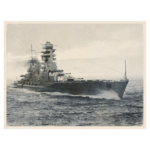
Nagato was developed during World War I according to the “fast battleship” concept. Eight 410 mm guns were supposed to constitute her primary armament in an attempt to respond to new powerful naval gun systems designed in Britain and the U.S.A. The battleship’s main armor belt had a thickness of 300mm. Nagato was commissioned in 1920, and in the mid 1930’s the ship underwent a major overhaul.
Vice Admiral Yamamoto Isoroku was appointed the Commander-in-Chief of the Combined Fleet just a day before the outbreak of World War II, on 30 August 1939. The new Commander-in-Chief hoisted his flag on Nagato, the most powerful ship of the Empire of Japan. Yamamoto was onboard Nagato when he gave his famous order to commence the attack on Pearl Harbor, whereupon he took his ship along with five more battleships to sea, providing remote cover for the First Air Fleet.
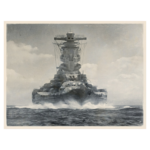
The legendary superbattleship was developed in the mid 1930s with an aim to surpass any battleships of potential rivals, primarily the U.S.A., that could be built within the ten following years. Yamato’s construction was carried out in absolute secrecy. The battleship started her service in the first weeks of the Pacific War, in December 1941.
In February 1942, Admiral Yamamoto carried his flag over to Yamato, which was in the final phase of the re-equipment process. For a year, he commanded the Combined Fleet from the largest warship in the world. In late May 1942, a number of Japanese battleships led by Yamato took to the sea in order to provide support for the carrier battle group near Midway. Operation MI ended in the loss of four Japanese aircraft carriers, which marked the end of the victorious offensive of Japan in the Pacific Ocean. It was onboard the Yamato that Admiral Yamamoto had to experience the grief of another defeat – the Guadalcanal Campaign – that depleted the Japanese Navy.
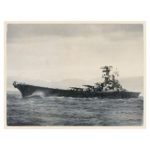
Yamato’s sistership was laid down in 1938, and commissioned in the summer of 1942. The ship displaced more than 63,000 tons, two thirds of which accounted for the weight of its armor protection. The battleship’s main battery included the most powerful naval guns in the world, namely nine 460 mm guns. Yamamoto, who later flew his flag on both ships, during his service at the Navy Ministry was opposed to the idea of building extremely expensive giants Musashi and Yamato, considering the expenditure of such resources unreasonable.
In February 1943, Musashi arrived at the main Japanese Navy base on Truk island. The brand new battleship was specifically equipped to serve as a flagship. Therefore, Yamamoto took his flag over to Musashi immediately after her arrival. Several weeks later, the Admiral set out for the fateful trip to Rabaul. In May 1943, the ashes of the perished Yamamoto were brought to Japan onboard his final flagship, battleship Musashi.
"Ships" Collection — Reward
Completing this sub-collection provides the following rewards:
| Icon | Type | Effect |
|---|---|---|
 |
Type 1 Type 2 Type 5 Type 6 |
|
"Miscellaneous" Collection
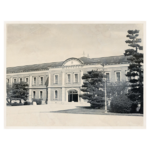
The Imperial Naval Academy was the principal educational establishment for training naval officers. It was founded in 1876 during the first years of Emperor Mutsuhito’s reign, when massive reforms were initialized in Japan, and the country’s naval force was to be formed. In 1888, the Imperial Naval Academy was moved to the island of Etajima situated in Hiroshima Bay, where a special building was constructed to accommodate it in 1893.
Almost without exception, officers of the Imperial Navy passed through the halls of this Academy. On Etajima, during three years of training in a severe and ascetic atmosphere, the samurai spirit of future combat commanders was tempered. Takano Isoroku, who would later become Admiral Yamamoto, studied at the Naval Academy from 1901 till 1904.
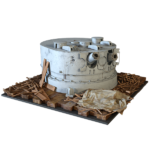
During the Battle of Tsushima that was the decisive encounter between the Russian and Japanese navies in the Russo -Japanese War of 1904-1905, the armored cruiser Nisshin, where Takano Isoroku served at that time, was the junior flagship of the main battle force under command of Admiral Togo. As a result of the intensive maneuvering, at some point of the battle the cruiser got a chance to lead the entire squadron for some time. More than once Nisshin found herself under concentrated gun fire from Russian armored cruisers. Three of her four main battery guns were destroyed and about 100 crew members were lost or injured, which made her one of Japan’s most battle-scarred ships. Takano Isoroku was also heavily injured in the explosion of the 203 mm gun of the fore end turret.
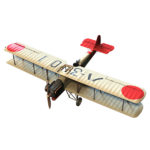
From 1924 the service of Yamamoto Isoroku was closely associated with naval aviation. At the test site in Kasumigaura, when Yamamoto was the senior officer of his flying school, the latest equipment was tested, including the Mitsubishi B1M, which became one of the first mass-produced torpedo bombers of the Japanese fleet. The aircraft could fly at a maximum speed of 210 km/h, its armament consisted of four 7.7 mm machine guns, and a 457 mm torpedo or 240 kg bombs.
Afterwards, when Yamamoto held leadership positions equal to the rank of an Admiral at the Navy Aviation Bureau of the Navy Ministry, he continued to actively supervise the development and implementation of new types of aircraft, including G2H, one of the first Japanese long-range land-based bombers, and bomber G3M Nell, and torpedo bomber G4M Bettythat became famous during the Pacific War.
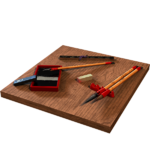
Yamamoto Isoroku preferred to spend his leisure time playing shogi, a traditional Japanese board game in the same family as chess, with his subordinates. He dedicated moments of seclusion to calligraphy, as he was a big admirer of it.
In Japan, calligraphy, also known as shodō (the way of writing), was a form of artistic writing and a kind of meditation practice requiring the utmost concentration. This calligraphy set includes items that were selected by a centuries-old tradition: a brush (“fude”), an inkstick (“sumi”), an inkstone (“suzuri”), a paper weight (“bunchin”), and a brush rest (“fudeoki”).
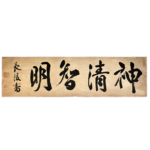
After the victory at Pearl Harbor, Yamamoto Isoroku became extremely popular not only in the navy, but throughout Japan. The Admiral’s followers often asked him to send them samples of calligraphy, which he was fond of.
Shodō characters were supposed to translate the mind and soul state of the writer. Their exact meaning was very difficult to translate, as every character can have many connotations.
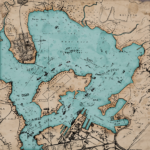
After assuming command of the Combined Fleet, Yamamoto started revision of the Japanese naval strategy for a possible confrontation with the U.S.A. This caused conflict with the Imperial Japanese Navy General Staff who based their plan on defense and a decisive battle with battleships as the core of the forces. Yamamoto thought that the only chance to win the war with the U.S.A. was to regain the initiative and make a sudden crushing blow to the U.S.A. fleet.
In Spring 1940, he raised the idea of a massive air attack on the U.S.A. naval base in Pearl Harbor. Further details were elaborated by his staff at the beginning of the following year. In December 1941, the famous attack was performed. The diplomats were delayed with the transfer of an official note to the US government, which resulted in an attack “without declaration of war,” this is not what the Admiral intended. He subsequently openly expressed his discontent with this fact to his colleagues.
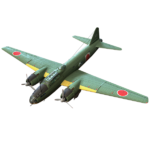
While in Rabaul in April 1943, Yamamoto decided to visit garrisons on the islands nearest to the front line to raise the spirits of the soldiers defending there. On April 13, the local command sent an encrypted radiogram to the islands with details of the time and place of arrival of the Commander-in-Chief, assuming that the Americans would be unable to crack the newly updated code within a few hours.
In the early morning of April 18, two G4M1 Betty bombers from the 705th air group, escorted by six A6M Zero fighters, left Rabaul. The Commander-in-Chief was in the pilot’s cabin of bomber No. 323. They were intercepted by 14 U.S.A. P-38 lightning fighters in the skies above Bougainville island. A few minutes later, bomber No. 323, riddled with bullets, crashed into the jungle. As the medical examination later showed, the Admiral was mortally wounded while the plane was still in the air.
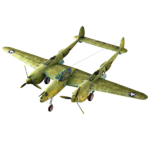
The radiogram, which contained information about the time and route of the Commander-in-Chief’s visits to the islands of Bougainville and Shortland, was intercepted and deciphered by US naval intelligence on April 14, 1943. US President Franklin D. Roosevelt personally ordered Navy command to “get Yamamoto.”
Rear Admiral Mitscher who was commanding air forces on the Solomon Islands assigned the 339th Squadron to the task code-named Vengeance, as only that squadron had P-38G Lightning fighters with sufficient operational range. In a quick air battle above Bougainville, they lost one P-38G and shot down the aircraft with Yamamoto and his staff on board. The Bomber Betty carrying the Admiral was shot down by the fighter No. 147 controlled by First Lieutenant Rex T. Barber.
"Miscellaneous" Collection — Reward
Completing this sub-collection provides the following rewards:
| Icon | Name | Notes |
|---|---|---|
 |
Two Flags |
|
